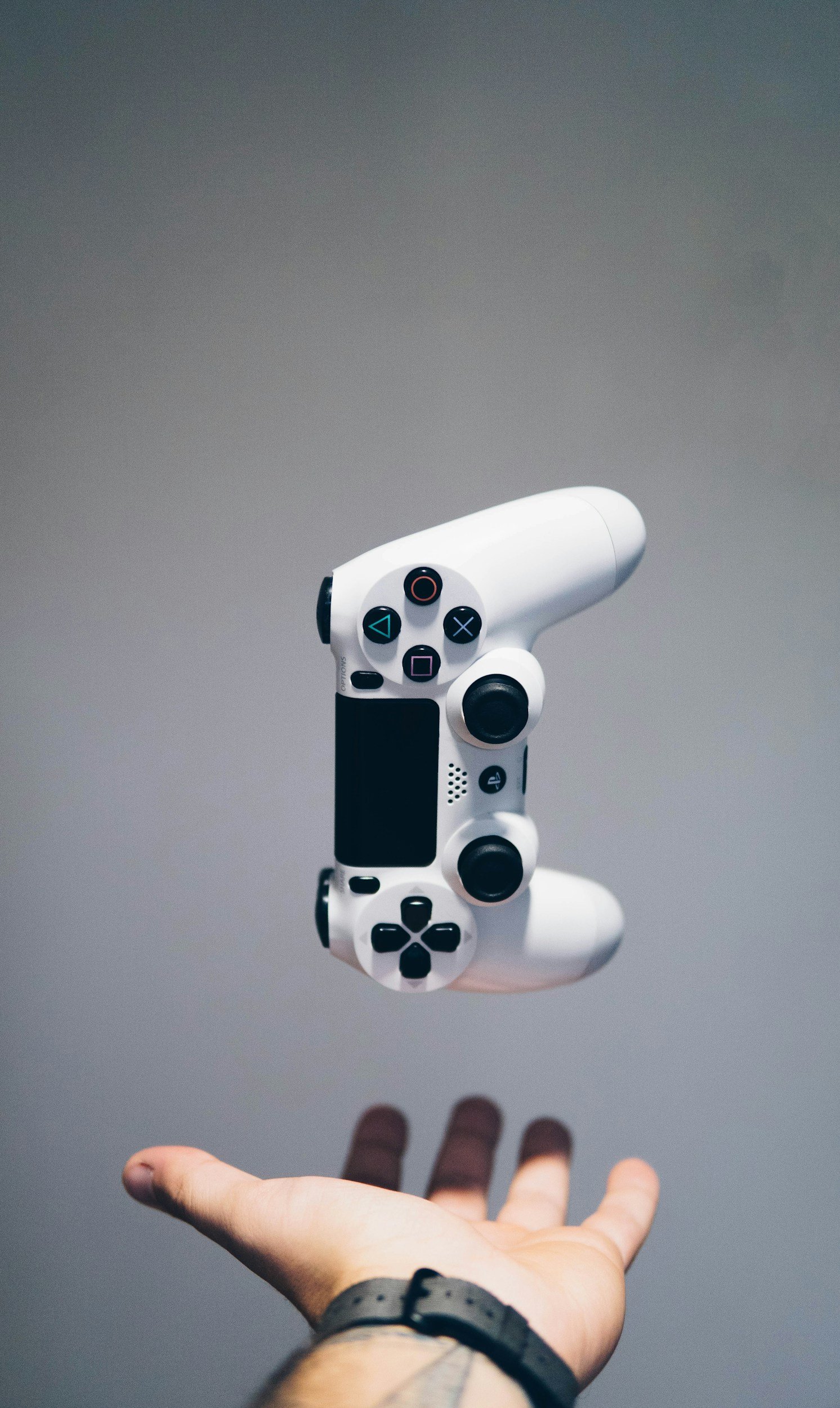The Proteus Effect: How Our Avatars Shape Our Behaviour
In the digital age, our self-presentation online often differs from how we appear and act in real life. Whether it’s choosing a playful cartoonish avatar in a gaming environment, selecting a more polished professional profile picture on LinkedIn, or experimenting with filters on social media, the avatars and virtual representations we create can have profound influences on how we interact with others—and even how we perceive ourselves. One of the most intriguing phenomena to emerge from cyberpsychology research is the “Proteus Effect,” which suggests that the characteristics of our virtual self-representation can directly shape our real-world behavior and attitudes. This article explores the origins of the Proteus Effect, the psychological mechanisms behind it, and its implications across various digital contexts—from online gaming to virtual reality therapy.
Defining the Proteus Effect
The Proteus Effect, named after the shape-shifting Greek god Proteus, describes how changes in one’s digital self-representation can lead to corresponding shifts in offline behavior. Nick Yee and Jeremy Bailenson, who introduced the term in 2007, observed that people wearing avatars with certain attributes—such as height, attractiveness, or perceived competence—might internalize those attributes and exhibit behaviors consistent with them, even after leaving the virtual environment.
Key Features of the Proteus Effect
Avatar Attributes and Behaviors: Individuals adopt attitudes and actions that they associate with the visual or conceptual attributes of their avatars (e.g., feeling more confident if the avatar is taller or more aesthetically appealing).
Self-Perception Shift: The user begins to see themselves, even if unconsciously, as sharing traits with their avatar, creating a subtle shift in mindset and behavior.
Spillover into Real Life: These behavioral changes can persist beyond the virtual platform, influencing social interactions in the physical world.
Historical Context and Foundational Studies
Early Insights from Social Psychology
Even before the term “Proteus Effect” was coined, social psychologists had been investigating how situational cues and symbolic representations can alter behavior. For example, studies in symbolic interactionism and self-perception theory demonstrated that people often conform to the roles, labels, or expectations placed upon them. Classic experiments involving role play—such as the famous Stanford Prison Experiment—hinted at the power of situational roles to dramatically change individual behaviors.
Nick Yee and Jeremy Bailenson’s Work
The formal study of the Proteus Effect began with Nick Yee and Jeremy Bailenson’s experiments at Stanford University. In a landmark study published in 2007, the researchers used immersive virtual environments to explore how participants behaved when their avatars possessed certain traits (e.g., more attractive versus less attractive). Results indicated that participants assigned to more attractive avatars stood closer to virtual conversation partners, disclosed more personal information, and believed their social interactions went more smoothly—behaviors consistent with what one might expect from someone with higher physical attractiveness offline.
Extensions and Replications
Following Yee and Bailenson’s foundational studies, numerous other researchers replicated and extended their work, examining:
Height and Power Dynamics: Participants who “inhabited” taller avatars were more confident in negotiations and displayed more dominant behavior.
Body Image and Eating Behaviors: Individuals wearing slimmer or more athletic avatars sometimes adopted healthier real-world habits, at least in the short term.
Gender Representation: Wearing an avatar of a different gender could temporarily influence attitudes about gender roles or empathy levels toward the opposite gender.
Psychological Mechanisms Behind the Proteus Effect
Why do people’s online self-representations wield such a significant influence over their offline personalities? Several psychological mechanisms may be at play:
Self-Perception Theory: Individuals often infer their own attitudes and traits by observing their behavior (and in this case, their avatar’s characteristics). If the avatar is visually assertive or attractive, the user may internalize those attributes as part of their self-concept.
Social Cognitive Theory: People learn by observing and imitating models. In a virtual environment, the avatar becomes the model. By seeing the avatar “act” in a certain way, users may be subtly guided to mimic those behaviors.
Embodiment and Immersion: In highly immersive virtual reality, the user may experience “embodiment,” a phenomenon where the user’s sense of self extends into the avatar. This can intensify the psychological impact of avatar attributes, especially when haptic feedback or motion tracking is involved.
Priming and Expectancy Effects: If users believe that a certain avatar trait (e.g., intelligence, authority) leads to specific behaviors, they may unconsciously align their actions to fulfill that belief.
Real-World Applications of the Proteus Effect
1. Gaming and Esports
In online multiplayer games, players carefully craft avatars that reflect their aesthetic preferences or desired personas. Research suggests that gamers who choose heroic or strong-looking characters may behave more prosocially or competitively, depending on the game’s context. Conversely, selecting villainous or aggressive avatars could prime hostile or antagonistic behaviors during gameplay. In professional esports, where teams brand themselves with distinctive logos and avatars, the Proteus Effect might subtly influence a player’s confidence and team dynamics.
2. Virtual Reality Therapy
Therapists increasingly use VR to create controlled, immersive settings for treating phobias, anxiety, and post-traumatic stress. The Proteus Effect can be harnessed to boost therapeutic outcomes. For instance, a patient grappling with low self-esteem might temporarily inhabit an avatar that represents their ideal self, potentially reinforcing positive self-concept and aiding exposure-based therapies. This approach aligns with self-affirmation techniques, in which adopting or visualizing an enhanced self-representation can help foster more adaptive coping strategies.
3. Education and Training
Simulation-Based Learning: Medical professionals, pilots, and military personnel use VR simulations to practice complex tasks. When learners see themselves represented as competent professionals in these environments, they may approach training with more confidence and diligence.
Classroom Avatars: In virtual classrooms or language learning platforms, students may choose avatars that represent how they wish to be perceived. This choice can foster increased engagement or a heightened sense of responsibility if the avatar embodies traits like diligence or leadership.
4. Corporate and Professional Settings
With the rise of remote work, companies are experimenting with virtual meeting platforms. Employees might join meetings in VR boardrooms using customizable avatars. In such an environment, employees who select more “executive-looking” avatars might unconsciously adopt leadership behaviors—speaking up more often, offering more ideas, or feeling more assured of their authority.
Ethical Considerations and Controversies
While the Proteus Effect opens exciting possibilities, it also raises ethical questions:
Manipulation: If avatar attributes can shape behavior, could platforms or designers exploit this for commercial gains? For instance, marketing campaigns might nudge users to adopt avatars that encourage impulsive spending or brand loyalty.
Identity and Authenticity: Some argue that adopting avatars with drastically different traits may blur lines between authenticity and fantasy, leading to confusion or fragmentation of self-identity.
Informed Consent and Vulnerable Populations: Vulnerable users (e.g., children, individuals with certain mental health conditions) might be more susceptible to suggestive effects. This raises questions about how to protect them from unintended negative consequences (e.g., adopting hyper-sexualized avatars or extremist visuals).
Critiques and Limitations
Although the Proteus Effect is widely recognized, researchers have identified certain limitations and points of critique:
Short-Term vs. Long-Term Effects: Many studies focus on immediate behavioral changes. It remains unclear how long these changes persist and under what conditions they fade.
Individual Differences: Factors like personality, cultural background, and baseline self-esteem can moderate the extent to which an individual is susceptible to the Proteus Effect. A highly self-aware or skeptical user might be less influenced by their avatar’s attributes.
Context Dependence: The effect may vary depending on the context of use. A high-stakes professional environment might amplify the effect of wearing a more authoritative avatar, while a casual social platform may not produce the same level of influence.
Methodological Challenges: Studies often rely on relatively small sample sizes in lab-based VR setups. Real-world settings, where variables are not as tightly controlled, might produce different results.
Future Directions
Advanced Avatars and Personalization: As technology evolves, avatars can become hyper-realistic or biologically synced (e.g., reflecting real-time facial expressions). Researchers will explore whether higher fidelity avatars induce stronger Proteus Effects.
Neuropsychological Studies: Using functional Magnetic Resonance Imaging (fMRI) or Electroencephalograms (EEG), future research could delve deeper into how the brain processes and integrates avatar-based cues, revealing the neural correlates of the Proteus Effect.
Augmented Reality (AR) Integration: AR headsets and smartphone apps overlay digital elements onto the physical world, creating a novel space for studying self-representation. For example, if a user sees themselves wearing “smart glasses” or having special abilities in AR, will that influence offline confidence or interpersonal behaviors?
Ethical Guidelines and Interventions: The expansion of VR and AR for education, therapy, and entertainment underscores the need for robust ethical guidelines. Future work might focus on how to leverage the Proteus Effect for positive outcomes—like boosting confidence, empathy, or learning—while minimizing risks related to manipulation or identity confusion.
Simply Put
The Proteus Effect offers a compelling window into the broader field of cyberpsychology, illustrating how virtual identities can shape real-life behavior in subtle yet meaningful ways. As digital technologies become more immersive and pervasive, understanding the Proteus Effect becomes increasingly critical, both for harnessing its positive potential—such as therapeutic applications and educational innovations—and for mitigating ethical risks like manipulation and identity confusion. Just as the mythic Proteus was capable of changing form at will, so too do we possess the capacity to adapt and shift our behaviors in response to the avatars we choose. By acknowledging and studying this shape-shifting dynamic, we can better navigate our ever-expanding digital realities and harness them for well-informed, ethically minded growth.










